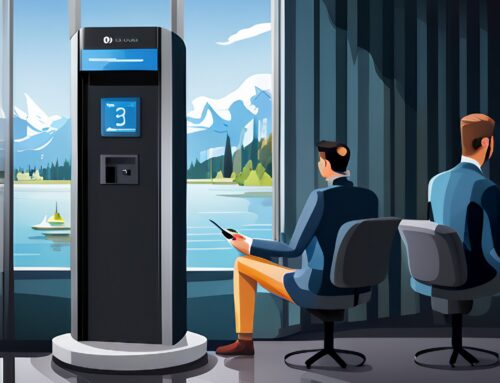In the heart of a sweeping transition to remote work, the cybersecurity threat landscape has shifted dramatically. The comforts and conveniences of home offices have, by necessity, created vulnerabilities that can’t be ignored. It’s a new frontier in security, and business executives and IT professionals must be prepared. It’s time to confront the critical cybersecurity challenges that have arisen alongside the remote work revolution.
The Surge in Remote Work and Its Cybersecurity Implications
The global pandemic has accelerated a trend that was already taking shape: the massive migration from traditional office spaces to remote work setups. For the majority of businesses, this shift has been profound, but it’s also been punctuated by a significant uptick in cyber threats.
This new way of working has, by its very nature, multiplied the number of potential entry points for cyber adversaries. Unsecured home networks, the use of personal devices, and a lack of adequate training can render even the most sophisticated corporate security measures ineffective. The numbers paint a worrisome picture: cybersecurity threats have more than doubled since the pandemic.
Understanding the Altered Threat Landscape
The remote work environment is fertile ground for cyber threats. One of the most insidious is the rise of phishing attacks, with remote workers often less adept at recognizing and avoiding phishing attempts than they would be in an office setting. Furthermore, home networks are typically less secure than those within a corporate infrastructure, making them a prime target for attackers looking for an easy way into a company’s sensitive data.
Another significant consideration is the use of removable media. USB drives and other similar devices can function as carriers for malware, which can be easily spread from a remote worker’s personal device to the corporate network. This is a stark departure from the comparatively controlled environment of an office network.
A Comprehensive Cybersecurity Strategy for Remote Workforces
The first line of defense against the new wave of threats is an adaptive cybersecurity strategy. It must be comprehensive, encompassing both technology and robust human processes. A focus on policies for the use of removable media, in particular, is paramount.
Businesses should consider deploying measures to mitigate the risks associated with removable media, such as physical port locks. These are simple and effective tools that prevent unauthorized devices from being connected to a company network. By implementing such solutions, businesses can significantly reduce the risk of a cyber incident stemming from a home office.
Security Solutions in the Age of Remote Work
There are various measures businesses can adopt to enhance their security posture in the era of remote work. From technological innovations such as zero-trust frameworks, which verifies every user and device before granting access, to the use of secure VPNs that create encrypted connections, providing a secure conduit between remote workers and the corporate network.
Physical security solutions, such as port locks, can play a pivotal role in defending against threats from removable media. These device control tools are relatively new to some cybersecurity strategies but offer an economical and robust means to prevent threats from seeping into a company’s digital infrastructure.
Empowering Your Remote Workforce with Enhanced Cyber Vigilance
A key factor in safeguarding your business is ensuring that your employees are adequately trained in remote cybersecurity best practices. Regular and practical education can instill a sense of responsibility in each individual to function as the first line of defense. Encouraging adherence to protocol for remote work, such as strict guidelines for removable media usage, can have a profound effect on protecting your company’s assets.
Enhancing cybersecurity in a remote work world involves a multifaceted approach. Key initiatives include:
- Rigorous employee training and awareness programs
- Clear protocols and guidelines for removable media usage
- Deployment of port lock solutions for physical security
- Use of state-of-the-art digital security systems and protocols
The Road Ahead: Future-Proofing Your Business Against Cyber Threats
Looking forward, cybersecurity must be at the forefront of business planning. The remote work trend appears to be more than temporary, as it introduces efficiencies and flexibility that many businesses are unlikely to abandon. It’s crucial, therefore, to future-proof your cybersecurity strategies, considering the tribulations and triumphs of the remote work paradigm.
The rise in remote work presents an array of cybersecurity challenges, but with the right strategies and tools, these challenges can be met. It’s time to elevate our approach to cybersecurity in light of the significant changes to the way we work. By focusing on education, technology, and strategic investment, businesses can ensure they are protected in this new remote work world. Those who meet this moment with vigilance and foresight stand to emerge not just unscathed, but more resilient and secure.





